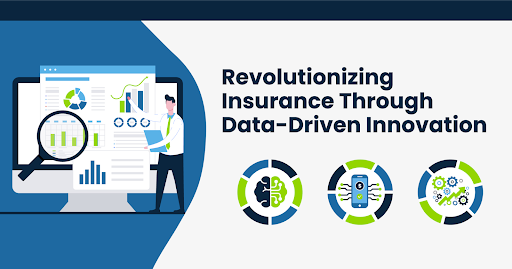
Artificial intelligence and business analytics are rapidly evolving fields that are at the forefront of transforming industries and redefining business practices. With the emergence of advanced technologies, the insurance sector is undergoing a profound transformation. Data has always been an important aspect of decision-making in the insurance sector. Long before the advent of computers, the insurance industry collected and stored all data manually. With the digitization of the insurance sector, the data has become available online, making it easily accessible.
With the massive amount of collected data and its complexities, the standard analytics methodologies were ineffective at obtaining comprehensive insights. However, with the advent of advanced technologies such as machine learning, artificial intelligence, and predictive modeling, the insurance sector underwent a significant transformation. These technologies have revolutionized the way insurance companies conduct business, enabling better decision-making, improved customer experiences, and increased efficiency and cost savings.
Today's insurance industry is dominated by dynamic and interconnected environments. Emerging threats such as cyberattacks, climate change-related disasters, and global pandemics are forcing the industry to reevaluate traditional risk models. With complex risks, various stakeholders in the insurance industry seek more data insights that could help with better decision-making.
Shravan Chandrasekaran, a leading expert in benchmarking and risk analytics at a top 5 insurance brokerage firm, has led several initiatives that address the most pressing industry challenges. His innovative approaches focus on enhancing data quality and improving risk management strategies.
According to Chandrasekaran, the effectiveness of AI and analytics in the insurance sector is often hampered by poor data quality, which can stem from various issues such as inconsistent data entry, inaccurate labeling, and biases in training models. "In an industry where timely and accurate information is crucial, these inefficiencies can have significant implications," he notes. Additionally, data privacy concerns pose significant challenges when integrating AI-assisted technologies. Chandrasekaran emphasizes the need for a robust data strategy and governance framework to ensure high-quality data, accurate labeling, and ethical AI deployment.
Throughout his career, Chandrasekaran has developed sophisticated benchmarking and analytics tools, demonstrating how technology can provide tangible value in the insurance industry. His approach underscores the unique skill set required to navigate the complex intersection of data strategy, organizational needs, and user experience within the insurance ecosystem. "It's not just about implementing new technologies," Chandrasekaran explains. "It's about understanding the nuances of the industry, anticipating user needs, and making decisions about how and when to incorporate emerging technologies like generative AI into our data strategy." This perspective reflects the critical thinking and foresight needed to shape effective data strategies in an era of rapid technological change. It highlights the importance of balancing innovation with pragmatism, ensuring that advancements in data analytics and AI serve to enhance, rather than complicate, the decision-making processes for all stakeholders in the insurance value chain.
Generative AI has emerged as a solution to improve operational efficiency and increase the amount of available data. However, they are doing so with a measured approach. "While generative AI holds immense promise, we must integrate it thoughtfully into our systems," Chandrasekaran explains. "We're developing platforms that leverage AI capabilities but keep humans in the loop to ensure accuracy and maintain trust."
In the fast-paced insurance environment, benchmarking is the most effective way to remain at the forefront. Benchmarking entails comparing the organization's performance, processes, and risk profile to those of competitors or established industry standards. For insurers, benchmarking can help with informed decision-making regarding product development, pricing strategies, and underwriting decisions. This allows insurers to identify emerging market trends, assess competitive positions, and customize their offerings to meet diverse client needs. Clients can also use benchmarking insights to optimize their insurance programs, comparing coverage, premiums, and claims to similar organizations, thereby making informed decisions regarding their risk management strategies and insurance purchases.
The insurance landscape is continuously evolving with AI, ML, automation, and business intelligence. Experts like Chandrasekaran have developed innovations that are not just tools but essential components of a modern insurance strategy, which insurers can integrate to navigate the modern risk environment. They represent the future of the industry one that is more data-driven, more personalized, and more effective at managing risk in an increasingly complex world.
Disclaimer: (This article is a paid publication programme. IBTimes claims no editorial involvement and assumes no responsibility, liability or claims for any errors in the content of the article.)









